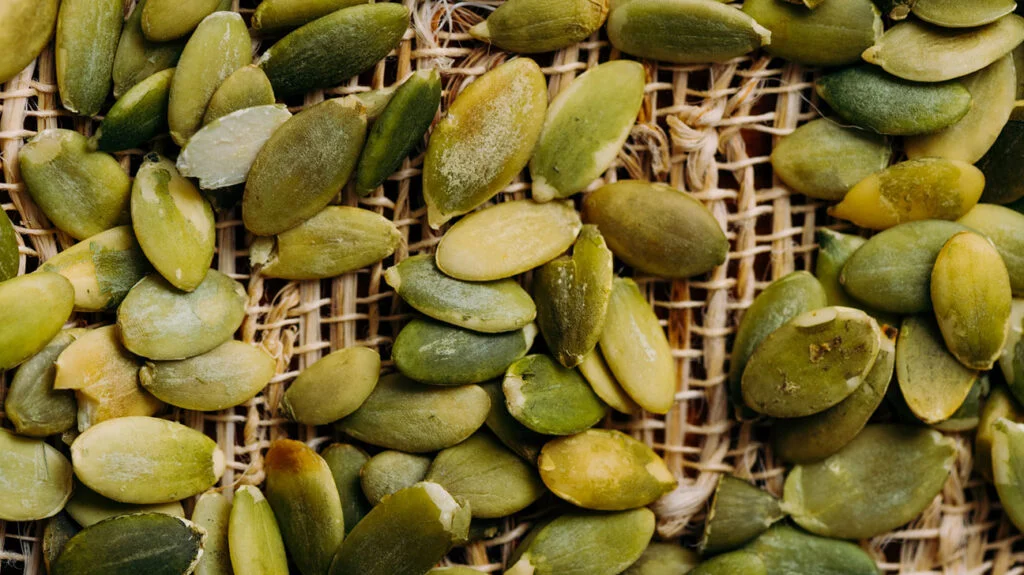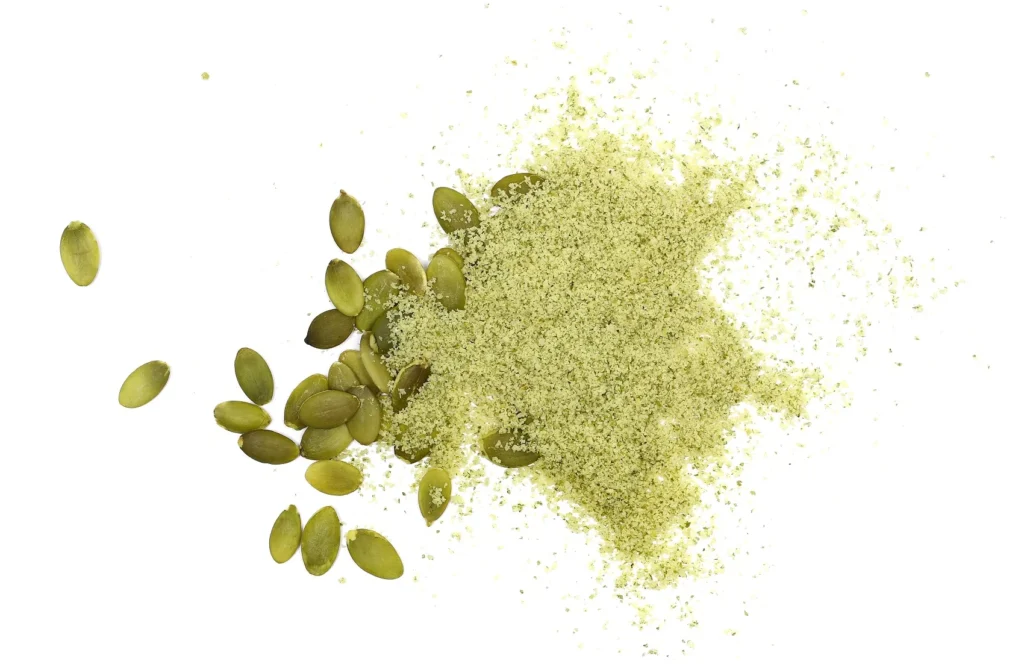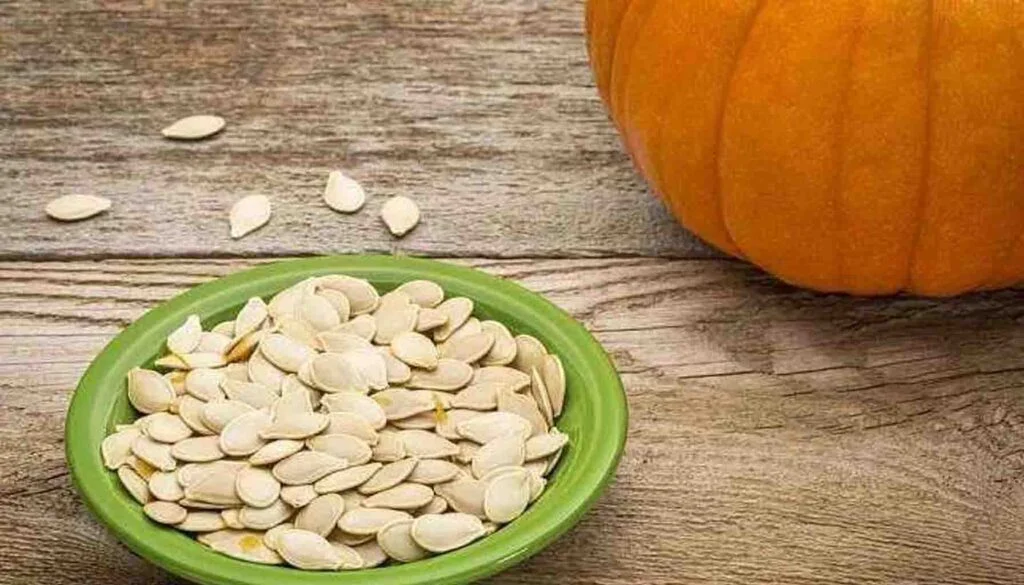Navigating the world of plant-based proteins can feel overwhelming. You’re looking for something clean, effective, and gut-friendly, but you’re met with a wall of confusing labels and conflicting information. Does “plant-based” mean “less effective”? And what about the crucial question of a “complete” protein?
Pumpkin seed protein has emerged as a powerful contender, praised for its nutritional density and hypoallergenic properties. But does it truly deliver on the most critical promise of a protein source?
This no-hype, evidence-based guide will answer every key question you have. We’ll look at the science, compare it to the competition, and give you the practical tools you need to decide if it’s the right choice for you.
First, What is Pumpkin Seed Protein and How Is It Made?
Before we dive into the details of amino acids and health benefits, it’s crucial to understand that pumpkin seed protein powder isn’t just a bag of crushed seeds. It’s a carefully crafted concentrate designed to maximize protein content while minimizing fats and carbs. Think of it less like flour and more like an extract, where the most valuable component—the protein—is separated and made the star of the show.
From Whole Seeds to Fine Powder: The Key Differences
When you eat a handful of whole, roasted pumpkin seeds (also known as pepitas), you’re getting a fantastic package of nutrition: high-quality protein, healthy fats (like omega-6 fatty acids), dietary fiber, and a wealth of minerals.
Pumpkin seed protein powder, however, is created through a process that typically involves:
- Pressing the Seeds: The raw seeds are first pressed to remove most of their natural oil. This step is vital, as it dramatically increases the protein concentration by weight.
- Milling and Sifting: The remaining “seed cake” is then milled into a fine powder and sifted to remove most of the fiber.
The result is a product that is significantly higher in protein and lower in fat and fiber per serving compared to whole seeds. This makes it an efficient, targeted tool for boosting your protein intake without adding significant calories from fat.
Why the Processing Method (e.g., Cold-Pressed) Matters for Quality
Not all protein powders are created equal, and the manufacturing process is a key differentiator. The best pumpkin seed protein powders are made using a cold-pressing method. This is a mechanical process that avoids high temperatures, which helps protect the delicate unsaturated fats and heat-sensitive micronutrients left in the powder.
The alternative is often solvent extraction, which uses chemicals like hexane to separate the oil. While effective, it’s a less natural process. For a truly “clean” product, always look for powders that are explicitly labeled as “cold-pressed,” “unrefined,” and “solvent-free.” The method used directly impacts the final nutritional integrity and purity of the powder you consume.
The Big Question: Is It a Truly Complete Protein?
Here’s the direct answer: Technically no, but functionally yes for almost everyone. Let’s break that down.
The Verdict: Functionally Yes, Technically No (Here’s Why)
A “complete protein” is a source that contains all nine essential amino acids in roughly equal and sufficient amounts. Our bodies cannot produce these nine, so we must get them from food.
Pumpkin seed protein contains all nine essential amino acids. However, it is slightly lower in two of them: lysine and threonine. Because of this, it is technically classified as an “incomplete” protein.
But—and this is a big but—this technicality is often irrelevant in the context of a varied diet. The term “incomplete” can be misleading, suggesting the protein is ineffective, which is far from the truth.
[Key Evidence] A Visual Look at Its Amino Acid Profile (Chart)
While the exact numbers vary by brand, a typical amino acid profile for pumpkin seed protein shows a robust presence of all nine essentials. It’s particularly rich in leucine, the key amino acid for signaling muscle growth.
How to Easily Make It 100% Complete with Food Pairing (Practical Guide)
The concern over incomplete proteins largely comes from an outdated idea that you need to get all essential amino acids in every single meal. Modern nutrition science confirms that your body can pool amino acids from different foods eaten throughout the day.
Even so, you can easily “complete” pumpkin seed protein within the same meal with a simple pairing. Since it’s low in lysine, just combine it with a food high in lysine.
Simple Protein Complements:
- Legumes: Add a scoop to lentil soup or a smoothie with pea milk.
- Quinoa: Sprinkle it over a quinoa bowl.
- Beans: Mix them into a black bean brownie recipe.
What Are the 5 Main Benefits of Pumpkin Seed Protein?
Benefit #1: It’s a Plant-Based Powerhouse for Muscle and Recovery
With up to 20-25 grams of protein per serving and a high concentration of Branched-Chain Amino Acids (BCAAs), particularly leucine, pumpkin seed protein is highly effective for muscle repair and growth. Studies have repeatedly shown that as long as total protein intake is sufficient, plant-based proteins are just as effective as animal-based ones for building muscle mass and strength.
Benefit #2: It’s Exceptionally Gut-Friendly and Easy to Digest
For many, this is the single greatest advantage. Unlike whey or casein, which can cause bloating, gas, and discomfort in those with lactose sensitivity, pumpkin seed protein is famously gentle on the digestive system. It’s naturally free from dairy, soy, gluten, and nuts, making it a haven for individuals with common food allergies and sensitivities.
Benefit #3: It’s Packed with Hard-to-Get Minerals (Magnesium, Zinc, Iron)
This is where pumpkin seed protein truly shines beyond just its protein content. It’s an excellent source of crucial minerals:
- Magnesium: Essential for muscle function, nerve health, and energy production.
- Zinc: Vital for immune function, hormone regulation, and skin health.
- Iron: Crucial for transporting oxygen in the blood and preventing fatigue.
Benefit #4: It May Support Heart Health and Metabolic Balance
The small amount of oil remaining in high-quality, cold-pressed powder is rich in heart-healthy unsaturated fats. Furthermore, pumpkin seeds have been studied for their potential to help improve blood sugar control, making the protein powder a smart choice for those focused on metabolic health.
Benefit #5: It’s a Top-Tier Option for Those with Allergies
In a world dominated by dairy, soy, and nut-based proteins, pumpkin seed protein offers a clean, simple, and powerful alternative. Its hypoallergenic nature provides a reliable protein source without the worry of triggering an allergic reaction.
How Does It Stack Up Against Other Proteins?
| Feature | Pumpkin Seed Protein | Pea Protein | Hemp Protein | Whey Protein |
|---|---|---|---|---|
| Protein (per 30g) | ~18-22g | ~20-25g | ~15g | ~20-25g |
| Complete? | Technically No (low Lysine) | Technically No (low Methionine) | Yes | Yes |
| Leucine (per 30g) | ~1.6g | ~1.8g | ~1.0g | ~2.5g |
| Digestibility | Excellent (5/5) | Good (4/5) | Good (4/5) | Varies (2/5) |
| Taste/Texture | Nutty, slightly earthy, smooth | Distinctly savory, can be chalky | Very earthy, gritty | Creamy, milky |
| Best For | Sensitive stomachs, mineral intake | Vegan muscle building, versatility | Fiber & Omega-3s | Max muscle growth, fast recovery |
The Winner for Different Goals
- For Sensitive Stomachs: Pumpkin seed protein is the undisputed winner.
- For Maximum Muscle Growth: Whey protein still leads due to its higher leucine content and rapid absorption, but pea and pumpkin are very close seconds.
- For All-Round Health & Minerals: Pumpkin seed and hemp protein offer significant benefits beyond just protein.
Is It Safe? A Transparent Guide to Choosing a Clean Product
Addressing the Heavy Metal Concern Head-On
It’s an uncomfortable truth that all plants, including pumpkins, can absorb trace amounts of heavy metals (like cadmium and lead) from the soil. This risk is not unique to pumpkin seeds but applies to many plant-based foods.
How to mitigate the risk: Choose brands that are transparent and proactive about safety. The best companies conduct third-party testing on their batches and are willing to provide a Certificate of Analysis (CoA) to prove their product is clean.
Myth-Busting: The Truth About Phytoestrogens
The phytoestrogens found in pumpkin seeds are called lignans, which are different from the isoflavones found in soy. Research suggests that lignans are beneficial, potentially supporting hormone balance and offering protective properties, and do not cause the hormonal disruptions sometimes associated with high soy intake.
Your 5-Point Safe Buying Checklist
- Demand Third-Party Testing: Look for logos from NSF, Informed Choice, or ask the company for their lab results.
- Choose Cold-Pressed: This ensures maximum nutrient retention and avoids chemical solvents.
- Opt for Organic: USDA Organic certification reduces the risk of pesticide residues.
- Read the Ingredient List: It should be short. Avoid products with added sugars, gums, fillers, or artificial flavors.
- Check for Brand Transparency: Does the company talk openly about its sourcing and testing?
How Do You Use It (And Actually Make It Taste Good)?
The Flavor Profile: What to Expect
High-quality pumpkin seed protein has a pleasant, nutty, and slightly earthy flavor. It’s much milder than hemp protein and less savory than pea protein. Its natural green hue will color your creations.
Pro Tips for the Perfect, Clump-Free Shake
- Use a Blender: For the smoothest texture, a blender is always best.
- Add Creaminess: Blend with a banana, a spoonful of avocado, or use a creamy non-dairy milk like oat or cashew milk.
- Complement the Flavor: It pairs beautifully with chocolate (cacao powder), cinnamon, vanilla extract, and fruits like berries and bananas.
The Ultimate Mini-Guide to Baking with Pumpkin Seed Protein
Pumpkin seed protein can add a fantastic protein and nutrient boost to baked goods.
- The Golden Rule: Start by substituting 25% of the flour in a recipe with protein powder.
- Best For: It works wonderfully in dense, moist recipes like brownies, muffins, pancakes, and energy balls.
- Add Moisture: Because it’s high in protein, you may need to add a little extra liquid (milk, applesauce, yogurt) to your recipe to maintain moisture.
Final Take and Frequently Asked Questions
Summary: Who Is Pumpkin Seed Protein Best For?
Pumpkin seed protein is an outstanding choice for:
- Anyone with a sensitive stomach or food allergies.
- Vegans and vegetarians are seeking a nutrient-dense, soy-free protein source.
- Health-conscious individuals who value whole-food nutrition and want the added benefits of minerals like magnesium and zinc.
- Athletes are looking for a clean, effective plant-based protein to support their training.
FAQ Section
Q: Is pumpkin seed protein a complete protein?
A: It contains all 9 essential amino acids but is slightly low in lysine and threonine, so it’s technically incomplete. However, this is easily balanced by a varied diet.
Q: Can you build muscle with pumpkin seed protein?
A: Absolutely. It is rich in BCAAs and effective for muscle repair and growth, making it a great alternative to whey.
Q: Does pumpkin seed protein cause bloating?
A: No, it’s known for being very easy to digest and is an excellent choice for people who experience bloating from other protein powders.
Q: What does it taste like?
A: It has a mild, nutty, and slightly earthy flavor with a smooth texture.



